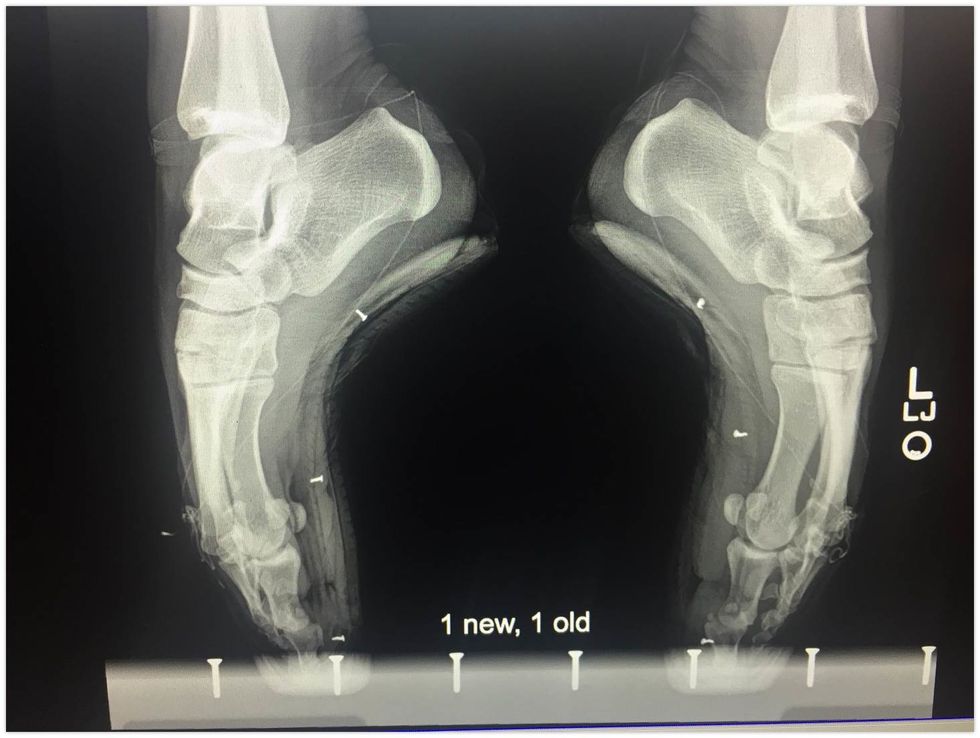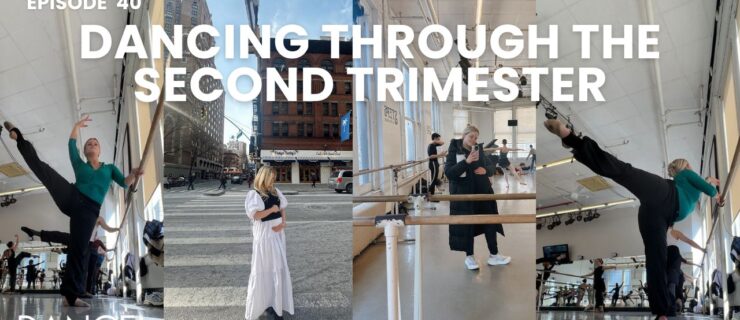The Dangers of Dancing on Dead Pointe Shoes—And 5 Ways to Prevent Injury
Pointe shoes are high maintenance. New pairs are not only expensive, but time consuming. So it’s no surprise that many dancers try to extend the lifespan of each shoe. But did you know that dancing on dead shoes can increase your risk for a variety of injuries?
What causes a shoe to break down?
Pointe shoes are traditionally made with layers of tightly packed paper or fabric for the box, and leather, plastic, cardstock or layers of glue-hardened burlap for the shank.
When new, these parts can feel stiff. Dancers often fit their shoes to their foot by breaking them in, i.e. bending the shank, crushing the box, wetting the glue, etc. These modifications can make the shoe fit more comfortably, but can also compromise the structure of the shoe.
When dancing, your foot sweat causes pointe shoe materials to weaken, much like a cardboard box left in the rain. The longer, and more frequently you wear a particular pair, the faster it will break down. Alignment, choreography and foot strength also affect the natural wear of the shoe.
How does a dead pointe shoe cause injury?
Dancing on pointe is not a natural activity. Pointework puts four times the body weight through your feet, so it is important to try to transmit forces through the bones and soft tissues as evenly as possible.
Each foot/ankle has 26 bones, 33 joints and more than 100 ligaments and tendons. A well-fit shoe supports the alignment of these structures, but a “dead” shoe can cause these structures to collapse onto themselves. This can overload the joints and lead to long-term alignment problems like bunions or damage to the cartilage which can lead to arthritis, bone spurs and subsequent loss of motion in the joint (something known as hallux rigidus, which can make demi pointe very difficult).
When the platform breaks down or the box or shank no longer support the foot, this causes your center of gravity to change. Force is no longer evenly distributed through your feet. Instead, it’s excessively loading the top of the foot. As the top of the midfoot and back of the hindfoot start to absorb these forces, the bones of the foot and ankle can be at risk for stress fractures.
Many soft tissue injuries can also occur as your body tries to compensate. Both the flexor and extensor tendons of the foot and ankle can get overworked and/or overstretched from trying to correct the malalignment caused by a dead shoe. Several other muscle groups also must work harder, putting you at risk for tendinitis, bursitis and even tendon tears.
These problems are usually treatable but may linger even after the dead shoes are replaced.
 An x-ray of feet in a new pointe shoe (on the left) and an old pointe shoe (on the right), showing the change in alignment and collapse of the joint spaces caused by the lack of support.
An x-ray of feet in a new pointe shoe (on the left) and an old pointe shoe (on the right), showing the change in alignment and collapse of the joint spaces caused by the lack of support.
Courtesy Meier
How can you prevent injury from dead shoes?
While there is no avoiding shoe breakdown, there are some things you can do to prevent injury.
-
Make sure your pointe shoes are well fit.
Feet change over time as you get stronger or more flexible, and with wear and tear. -
You don’t need to destroy your pointe shoes to break them in.
If you are relatively new to pointe, you don’t need to do anything to your shoe unless guided by a teacher. When you see the more experienced dancers modifying their shoes, remember that they are seasoned “mechanics” and are modifying their shoes to their own feet. What they are doing is not necessarily right for you. -
Change shoes on a schedule:
Don’t wait for them to break. Most pointe shoes made from traditional materials need to be changed after every 10 to 20 hours of use, depending on your level of training. -
Feel your shoes before and after dancing:
Check for any asymmetries, soft spots or areas of excessive wear. Monitor these areas and if your shoes are not wearing evenly, consider watching your biomechanics to understand why certain areas break down more quickly. -
Let shoes completely dry out after every use.
Always have a couple pairs prepped and ready for dancing so you can rotate and avoid dancing on damp shoes.




